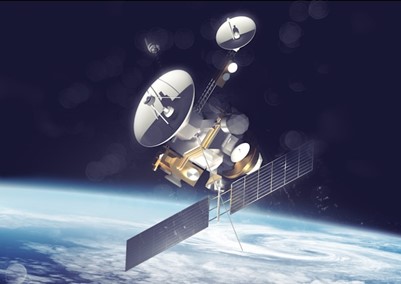
Global Navigation Satellite System (GNSS) technology has revolutionized the way many industries operate, and perhaps no field has benefited more from this technology than surveying. Traditionally, surveying relied on cumbersome and time-consuming methods, but the advent of Tallysman antennas has dramatically transformed the industry, enabling more accurate, efficient, and cost-effective operations.
The technology uses satellites to pinpoint precise locations on Earth, and high-precision global positioning antennas enhance this technology by providing incredibly accurate data even in complex and challenging environments. These antennas have become indispensable tools for surveyors, engineers, and construction professionals. This article explores how high-precision GNSS antennas are transforming the landscape of surveying, the advantages they offer, and how they are shaping the future of land measurement.
Surveying, at its core, involves measuring and mapping the physical features of a piece of land. Historically, surveyors relied on manual instruments like compasses, theodolites, and leveling rods to obtain measurements. While these methods worked, they were labor-intensive, time-consuming, and susceptible to human error.
With the introduction of satellite technology, surveying has undergone a massive transformation. Global Navigation Satellite Systems provide surveyors with the ability to receive real-time positioning data from satellites, allowing them to calculate precise coordinates on the Earth’s surface. They further elevate this technology, providing surveyors with centimeter-level accuracy in their measurements.
High-precision GNSS antennas work by receiving signals from multiple satellites orbiting the Earth. These satellites broadcast signals that the antenna captures, allowing surveyors to determine the exact location of the antenna in relation to the Earth's surface. By using a network of satellites from multiple constellations (such as GPS, GLONASS, Galileo, and BeiDou), high-precision antennas can greatly improve location accuracy.
The accuracy of these precise systems often goes beyond the standard few meters provided by conventional GPS systems. These systems use advanced techniques such as differential GNSS (DGNSS) or real-time kinematic (RTK) positioning to achieve accuracies within centimeters, enabling more precise measurements for surveying tasks.
RTK technology uses a base station and a rover to calculate corrections to GNSS data. The base station, set up at a known location, communicates with the rover, providing real-time corrections to ensure the rover’s measurements are highly accurate. The integration of high-precision GNSS antennas with RTK technology has significantly reduced the need for post-processing data, increasing efficiency and reducing the chances of errors.
The most significant benefit of high-precision GNSS antennas is their ability to provide highly accurate location data. This level of accuracy is essential for a variety of surveying applications, including land boundary mapping, construction layout, and infrastructure development. Surveyors can rely on centimeter-level accuracy, ensuring their measurements are as precise as possible. This level of detail is crucial for legal purposes, ensuring that land boundaries and property lines are marked correctly to avoid disputes.
In traditional surveying, time-consuming methods like triangulation or leveling were often required to gather accurate measurements. With high-precision antennas, surveyors can cover vast areas in a fraction of the time. Real-time data collection means that there is no need for lengthy post-processing, which can slow down project timelines. This efficiency also translates to cost savings, as surveyors can complete projects more quickly and with fewer personnel, reducing labor costs.

One of the biggest challenges for traditional surveying equipment is operating in difficult or inaccessible locations. High-precision GNSS antennas, however, can function effectively in a wide range of environments, from dense urban canyons to remote rural areas. Global satellite systems have the ability to filter out interference and work in areas where other technologies may struggle. This makes them particularly valuable for surveying tasks in areas where traditional equipment might fail.
With high-precision GNSS antennas, surveyors can obtain real-time results without the need to wait for data processing. This immediate feedback allows for quicker decision-making and more flexible operations. Surveyors can identify and address any discrepancies or issues during the survey, avoiding the need for costly revisions later on.
The integration of this technology into surveying workflows has streamlined the entire process. These systems are designed to be user-friendly, reducing the complexity of traditional equipment. Additionally, because GNSS systems provide automated data collection, there is less reliance on manual calculations, which significantly reduces human error.
Antennas are used in a wide range of surveying applications, including:
Land Surveying: Accurate boundary mapping and property line determination for residential, commercial, and governmental projects.
Construction and Engineering: Ensuring that buildings, roads, and infrastructure are constructed according to exact specifications.
Topographic Mapping: Creating detailed maps that represent the natural and man-made features of a landscape.
Mining and Environmental Surveys: Conducting surveys in difficult-to-reach areas or harsh environments, such as mines, forests, and wetlands.
Agriculture: Assisting in precision farming, where accurate land measurements are essential for crop planning and irrigation.
As GNSS technology continues to evolve, the possibilities for surveying are expanding. Advances in antenna design, signal processing, and data analytics are pushing the boundaries of what’s possible in land measurement. With more satellite constellations becoming available, high-precision GNSS antennas will only become more accurate and versatile.
Additionally, the integration of machine learning and artificial intelligence (AI) with GNSS data will provide surveyors with even more powerful tools to analyze and interpret their measurements. These technologies will enhance the ability to handle complex surveying tasks, making high-precision GNSS antennas an indispensable tool for the future.
High-precision GNSS antennas have truly changed the landscape of surveying, offering increased accuracy, efficiency, and versatility. These advancements in technology have made it easier for surveyors to capture precise data in less time, even in challenging environments. With their ability to integrate seamlessly into modern workflows, GNSS antennas have become an essential tool for surveyors, engineers, and construction professionals alike. As technology continues to evolve, the role of GNSS in surveying will only grow more prominent, enabling even greater precision and innovation in the field.